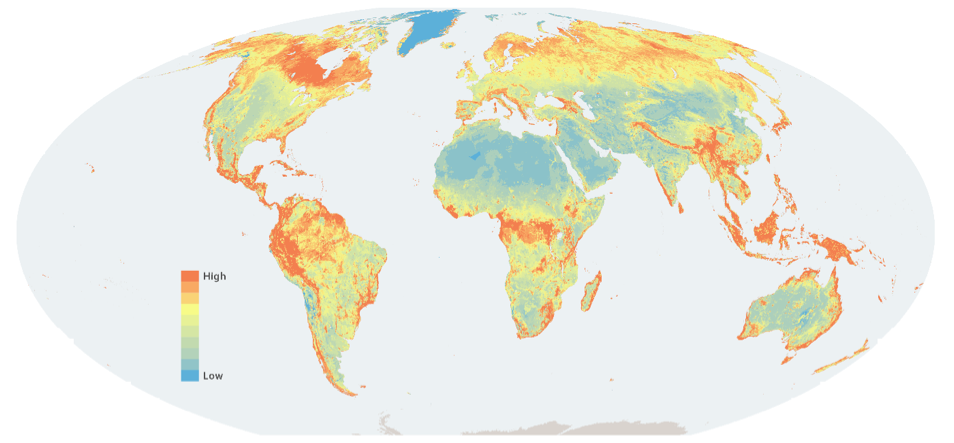New maps integrate available data on biodiversity and carbon to assist country policies for biodiversity and land-based greenhouse gas emissions. Further updates will be released soon.
Countries need integrated maps of biodiversity and ecosystem services, including carbon, to design and implement national policies for halting and reversing the loss of biodiversity and for curbing net greenhouse gas emissions from land use. Yet, such maps are in short supply. Today marks the first release of Nature Map’s freely available global map of terrestrial biodiversity and ecosystem carbon stocks, designed to support governments in policy design.
Says, Guido Schmidt-Traub from SDSN, “these new maps are an important decision support tool for countries, as they prepare for the landmark climate and biodiversity conferences in 2020. We are ready to work with governments and their technical partners to support the design and implementation of ambitious national strategies for biodiversity and nature-based solutions. Nature Map can help countries integrate these policies into their national climate and biodiversity strategies.”
Nature Map has been prepared by teams from the International Institute for Applied Systems Analysis (IIASA), International Institute for Sustainability (IIS) Rio, UN Environment Programme World Conservation Monitoring Centre (UNEP-WCMC), and UN Sustainable Development Solutions Network (SDSN), with the support of Royal Botanic Gardens Kew.
Areas of global significance for biodiversity conservation and carbon storage

Source: Nature Map
Piero Visconti from IIASA explains: “For this first version of Nature Map, we have consolidated unprecedented volumes of existing and new data using novel, cutting-edge scientific methods. We were able to include data from sources that were not previously available to policymakers. Our maps will be freely available and can be integrated with other spatially explicit information to support decision-making. This is an important step in helping bring better data to bear for improved policies. We will continue to develop and improve these products, as new data on land-use, biodiversity and carbon becomes available.”
The data is curated by UNEP-WCMC and will be available in Nature Map Explorer, a web portal designed for visualisation and expert annotation on the preliminary outputs. As soon as possible, the data will be freely accessible via the UN Biodiversity Lab.
In coming months, Nature Map will release additional data layers. Says Neil Burgess from UNEP-WCMC: “We will soon launch a wider consultation on the data and maps. This will help identify gaps and weaknesses in the data, so that these can be filled. We are working with research groups around the world to ensure that additional high-quality spatial data on biodiversity and ecosystem services can be made available to policymakers to support ambitious policies and direct implementation. I am excited to see the mobilization in the scientific community and hope that we can contribute to breakthrough agreements at the CBD and UNFCCC in 2020.”
Areas of global significance for the restoration of biodiversity and carbon storage

Source: Nature Map
Following this initial release of the data, the Nature Map Consortium will launch a public consultation towards the end of October. We invite interested governments, businesses, and civil society organizations to flag any questions they might have about the maps. They can contact us to explore how the maps might support more ambitious biodiversity and climate strategies. Members of the Nature Map Consortium also call on scientists with additional data to get in touch. As soon as possible, all data and findings will be subjected to independent, scientific peer review.
In late 2020, countries will convene in Kunming, China, for the 15th Conference of the Parties (COP) of the Convention on Biological Diversity (CBD). This landmark conference aims to adopt a global biodiversity framework for halting and reversing the dramatic decline of biodiversity around the world. Shortly thereafter, COP26 of the United Nations Framework Convention on Climate Change (UNFCCC) will convene world leaders to increase the level of ambition in curbing greenhouse gas emissions and review long-term climate strategies.
Nature Map gratefully acknowledges financial support from Norway’s International Climate and Forest Initiative (NICFI).
More information about Nature Map: www.naturemap.earth
Contact us at: info@naturemap.earth
Researcher contacts:
Piero Visconti
IIASA
visconti@iiasa.ac.at
Neil Burgess
UNEP-WCMC
Neil.Burgess@unep-wcmc.org
Guido Schmidt-Traub
SDSN
guido.schmidt-traub@unsdsn.org
Media contacts:
Ansa Heyl (Vienna)
IIASA
Tel: +43 2236 807 574
heyl@iiasa.ac.at
Emily Neville (Cambridge UK)
UNEP-WCMC
Emily.Neville@unep-wcmc.org
Cheyenne Maddox (New York)
SDSN
Tel: +1 270 978 1955
cheyenne.maddox@unsdsn.org
About IIASA:
The International Institute for Applied Systems Analysis (IIASA) is a scientific institute that conducts policy-oriented research into problems too large or complex to be solved by a single country or academic discipline, or of common concern to many countries that require national and international cooperative action – such as climate change, energy security, population growth, and sustainable development. IIASA’s mission is to provide insights and guidance to policymakers worldwide by finding solutions to global and universal problems through applied systems analysis in order to improve human and social wellbeing and protect the environment. www.iiasa.ac.at.
About International Institute for Sustainability: The International Institute for Sustainability (IIS) is an organization based in the city of Rio de Janeiro that is dedicated to promoting the transition to sustainability. IIS develops in line with the emerging field of Sustainability Science interdisciplinary research, provides assistance to governments, intergovernmental agencies, NGOs and businesses seeking solutions to their sustainability challenges and develops and implements projects. The main focus of IIS is sustainable land use, combining production requirements, environmental services and social development. http://www.iis-rio.org/en/
About SDSN:
The UN Sustainable Development Solutions Network (SDSN) has been operating since 2012 under the auspices of the UN Secretary-General. It mobilizes global scientific and technological expertise to promote practical solutions for sustainable development, including the implementation of the Sustainable Development Goals (SDGs) and the Paris Climate Agreement. SDSN works closely with United Nations agencies, multilateral financing institutions, the private sector, and civil society. www.unsdsn.org.
About UNEP-WCMC:
UN Environment Programme World Conservation Monitoring Centre is a world leader in biodiversity knowledge. It works with scientists and policy makers worldwide to place biodiversity at the heart of environment and development decision-making to enable enlightened choices for people and the planet. https://www.unep-wcmc.org/





